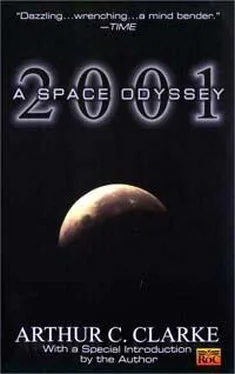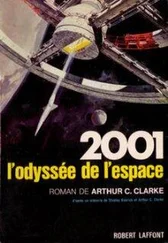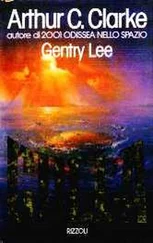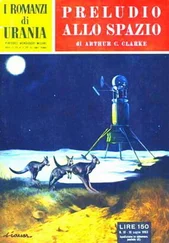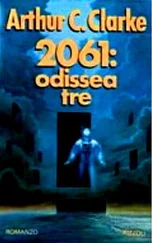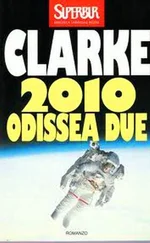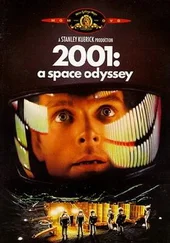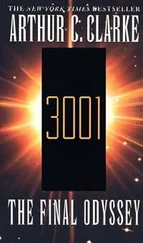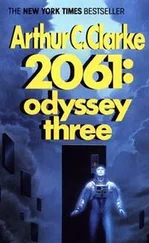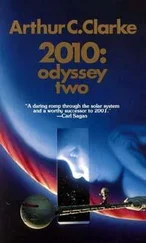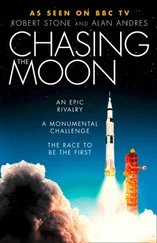And where could they have come from? The Moon itself? No, that was utterly impossible. If there had ever been indigenous life on this barren world, it had been destroyed during the last crater-forming epoch, when most of the lunar surface was white-hot.
Earth? Very unlikely, though perhaps not quite impossible. Any advanced terrestrial civilization – presumably a nonhuman one – back in the Pleistocene Era would have left many other traces of its existence. We would have known all about it, thought Floyd, long before we got to the Moon.
That left two alternatives – the planets, and the stars.
Yet all the evidence was against intelligent life elsewhere in the Solar System – or indeed life of any kind except on Earth and Mars. The inner planets were too hot, the outer ones far too cold, unless one descended into their atmosphere to depths where the pressures amounted to hundreds of tons to the square inch.
So perhaps these visitors had come from the stars – yet that was even more incredible. As he looked up at the constellations strewn across the ebon lunar sky, Floyd remembered how often his fellow scientists had "proved" that interstellar travel was impossible. The journey from Earth to Moon was still fairly impressive, but the very nearest star was a hundred million times more distant... Speculation was a waste of time; he must wait until there was more evidence,
"Please fasten your seat belts and secure all loose objects," said the cabin speaker suddenly. "Forty degree slope approaching."
Two marker posts with winking lights had appeared on the horizon, and the bus was steering between them.
Floyd had barely adjusted his straps when the vehicle slowly edged itself over the brink of a really terrifying incline, and began to descend a long, rubble-covered slope as steep as the roof of a house. The slanting earth-light, coming from behind them, now gave very little illumination, and the bus's own floodlights had been switched on. Many years ago Floyd had stood on the lip of Vesuvius, staring into the crater; he could easily imagine that he was now driving down into it and the sensation was not a very pleasant one.
They were descending one of the inner terraces of Tycho, and it leveled out again some thousand feet below. As they crawled down the slope, Michaels pointed out across the great expanse of plain now spread out beneath them.
"There they are," he exclaimed. Floyd nodded; he had already noticed the cluster of red and green lights several miles ahead, and kept his eyes fixed upon it as the bus edged its way delicately down the slope. The big vehicle was obviously under perfect control, but he did not breathe easily until it was once more on an even keel.
Now he could see, glistening like silver bubbles in the earthlight, a group of pressure domes – the temporary shelters housing the workers on the site. Near these was a radio tower, a drilling rig, a group of parked vehicles, and a large pile of broken rock, presumably the material that had been excavated to reveal the monolith. This tiny camp in the wilderness looked very lonely, very vulnerable to the forces of nature ranged silently around it. There was no sign of life, and no visible hint as to why men had come here, so far from home.
"You can just see the crater," said Michaels. "Over there on the right – about a hundred yards from that radio antenna."
So this is it, thought Floyd, as the bus rolled past the pressure domes, and came to the lip of the crater.
His pulse quickened as he craned forward for a better view. The vehicle began to creep cautiously down a ramp of hard-packed rock, into the interior of the crater. And there, exactly as he had seen it in the photographs, was TMA-1.
Floyd stared, blinked, shook his head, and stared again. Even in the brilliant earthlight, it was hard to see the object clearly; his first impression was of a flat rectangle that might have been cut out of carbon paper; it seemed to have no thickness at all. Of course, this was an optical illusion; though he was looking at a solid body, it reflected so little light that he could see it only in silhouette.
The passengers were utterly silent as the bus descended into the crater. There was awe, and there was also incredulity – sheer disbelief that the dead Moon, of all worlds, could have sprung this fantastic surprise.
The bus came to a halt within twenty feet of the slab and broadside on so that all the passengers could examine it. Yet, beyond the geometrically perfect shape of the thing, there was little to see. Nowhere were there any marks, or any abatement of its ultimate, ebon blackness. It was the very crystallization of night, and for one moment Floyd wondered if it could indeed be some extraordinary natural formation, born of the fires and pressures attending the creation of the Moon. But that remote possibility, he knew, had already been examined and dismissed.
At some signal, floodlights around the lip of the crater were switched on, and the bright earthlight was obliterated by a far more brilliant glare. In the lunar vacuum the beams were, of course, completely invisible; they formed overlapping ellipses of blinding white, centered on the monolith. And where they touched it, its ebon surface seemed to swallow them.
Pandora's box, thought Floyd, with a sudden sense of foreboding – waiting to be opened by inquisitive Man.
And what will he find inside?
The main pressure dome at the TMA-1 site was only twenty feet across, and its interior was uncomfortably crowded. The bus, coupled to it through one of the two airlocks, gave some much-appreciated extra living room.
Inside this hemispherical, double-walled balloon lived, worked, and slept the six scientists and technicians now permanently attached to the project. It also contained most of their equipment and instruments, all the stores that could not be left in the vacuum outside, cooking, washing, and toilet facilities, geological samples and a small TV screen through which the site could be kept under continuous surveillance.
Floyd was not surprised when Halvorsen elected to remain in the dome; he stated his views with admirable frankness.
"I regard spacesuits as a necessary evil," said the Administrator, "I wear one four times a year, for my quarterly checkout tests. If you don't mind, I'll sit here and watch over the TV."
Some of this prejudice was now unjustified, for the latest models were infinitely more comfortable than the clumsy suits of armor worn by the first lunar explorers. They could be put on in less than a minute, even without help, and were quite automatic. The Mk V into which Floyd was now carefully sealed would protect him from the worst that the Moon could do, either by day or by night.
Accompanied by Dr. Michaels, he walked into the small airlock. As the throbbing of the pumps died away, and his suit stiffened almost imperceptibly around him, he felt himself enclosed in the silence of vacuum.
That silence was broken by the welcome sound of his suit radio.
"Pressure O.K., Dr. Floyd? Are you breathing normally?"
"Yes – I'm fine."
His companion carefully checked the dials and gauges on the outside of Floyd's suit. Then he said:
"O.K.-let's go."
The outer door opened, and the dusty moonscape lay before them, glimmering in the earthlight.
With a cautious, waddling movement, Floyd followed Michaels through the lock. It was not hard to walk; indeed, in a paradoxical way the suit made him feel more at home than at any time since reaching the Moon. Its extra weight, and the slight resistance it imposed on his motion, gave some of the illusion of the lost terrestrial gravity.
The scene had changed since the party had arrived barely an hour ago. Though the stars, and the half-earth, were still as bright as ever, the fourteen-day lunar night had almost ended. The glow of the corona was like a false moonrise along the eastern sky – and then, without warning, the tip of the radio mast a hundred feet above Floyd's head suddenly seemed to burst into flame, as it caught the first rays of the hidden sun.
Читать дальше
